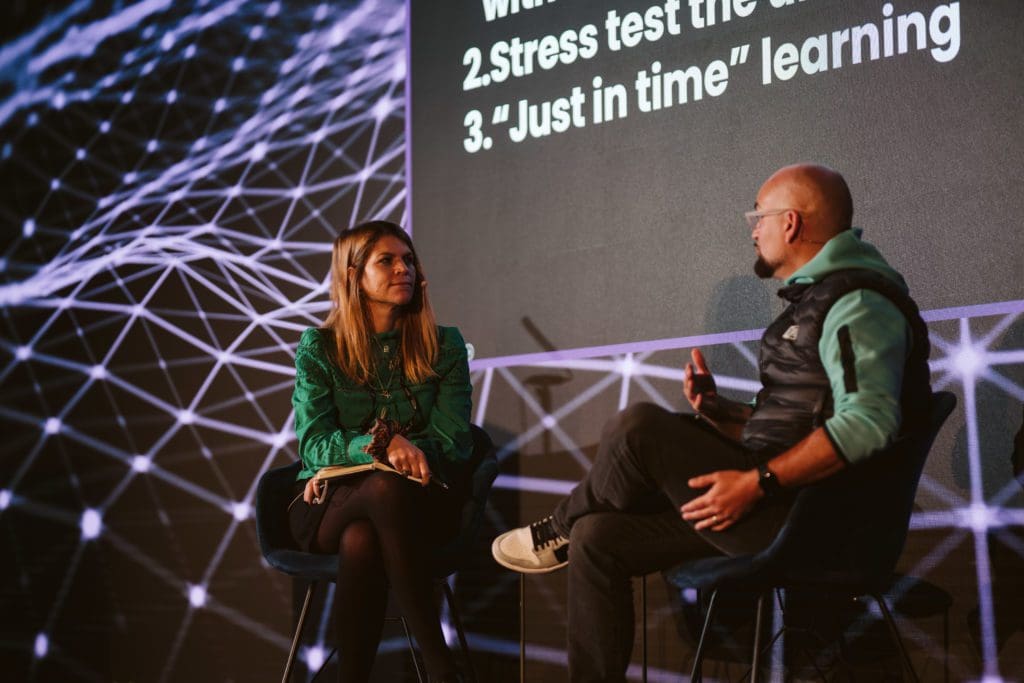Cryptocurrency is not known for its fantastic user experience (UX). In fact, many would say it’s one of the greatest barriers to entry into the space.
However, as the interest in digital assets and blockchain continues to grow, there may be an increasing need to move away from Discord chats and acronyms in favor of an approach that is accessible to all.
Earlier this year, the digital product and design team, Artkai, found that most crypto platforms’ UX was inaccessible. Furthermore, Statista found that only 9% of investors are satisfied with crypto exchanges. A lack of customer support and an inconvenient user interface are cited as two primary reasons for frustration.
On the one hand, this could be unsurprising. How could a supposedly “decentralized” world have a customer support system — the creators are surely the network’s users; it’s made by the customers…right?
Despite the decentralized ideal, much of the DeFi space is now run by centralized entities. Exchanges have CEOs and management teams, and you are your average corporation for all intents and purposes. Regardless, UX seems to have been left behind.
At Fintech Nexus’s Merge 2022 event in London, Anna Irrera, senior editor of Crypto at Bloomberg, and David Brear, CEO of 11:FS, discussed Crypto’s UX and how it could learn from fintech.
Three main areas
“I guess the challenge is learning where the industries come from,” said Brear. “Crypto is reminiscent of the early days of networking, rather than fintech.”
He explained that fintech was born out of a need for more accessible customer-centric products and the influence of technology.
“There was good user experience from the get-go in that sense because it was the differentiator from the big incumbent banks.”

On the other hand, cryptocurrency grew out of a subculture of cryptography, coding, and a renegade mindset. Groups of people were either fed up with the hierarchy and injustices of society or simply required an alternative system for value exchange.
“It does feel very technology-led,” said Brear. “It’s a bunch of tech guys…making up interfaces for themselves type thing. For normal people, it’s a challenge.”
“If you want to get to the mainstream, you will have to crack some of these problems.”
For Brear, there are three main points that could make a difference to crypto.
- Moving from functional UX to functional with social and emotional impact, which includes reducing the use of acronyms and inclusively communicating with consumers.
- Stress testing the “unhappy paths” to avert technology crises which may result in people losing money. This may also require a regulatory structure.
- “Just in time” learning to improve consumer engagement and understanding of the crypto world. Fintechs such as Revolut have started to approach this pain point with success.
Fintech can help
Brear explained that, despite similar challenges, companies had managed to find ways to make technology more accessible in the past. Things that had been embraced already by fintech services.
“When you look at most financial services, it’s not financial services reinventing or inventing something; it’s stealing with pride when it comes to other industries.”
“I think even the best experiences that we’re seeing in payments, or more traditional SME banking or retail banking are good ideas that the Apples, the Googles, etc., made mainstay when it comes to mobile interfaces or just good user experience in that sense.”
He referenced various fintechs that had done this effectively, paying particular attention to Shares and Daylight for bringing together a community and creating motivation for innovation.
In addition, he referenced the structures PayPal and Wise had in place for improving education.
“PayPal has done some really interesting things…when it comes to breaking down very difficult terms.”
“They explain them like normal human beings, going through how these things work and putting them in the context of the journeys that they’re doing.”
“Wise did a really good job of highlighting other areas where there are better rates out there that could be benefiting you as a customer or the advice they could give you throughout that process. They do that contextually to the process you’re in rather than having a guidance piece as a separate capability.”

Too much gamification could trivialize crypto
Fintech has widely used gamification in many instances to help approach the subject of finances.
“Organising your finances,” which can be perceived as a chore or just downright confusing, has, in many cases, been broken down using game elements to provide simple visual cues and rewards to aid understanding. While effective, some critique this approach as trivializing the serious implications of financial decisions.
“I think gamification shouldn’t be used as a way of trivializing the seriousness of financial services in that sense,” said Brear. “But more about bringing the ways in which you engage with things to be much more akin to experiences that you’ve engaged with all the time.”
“Too little friction, particularly in payments, can lead to a bad outcome for customers, as in money disappearing again. But this is where I think we need the medium of the organization’s intentions to serve customers in that way.”
The cocktail of low understanding and trivialization can create disaster for many in the crypto space. Stories of loans to fund investments or mining products continue to filter through following the shift to a bear market.
“There needs to be the level of experience that makes it accessible as well,” said Brear.
Learning from fintech to strike balance between useful product and UX
Digitally native and born out of coding, the crypto industry is still determining where it fits in the mainstream world. Many could still perceive the sector to be “pointless.”
The decision to stay with the status quo or make a stab at bringing the UX toward the less informed mass market could make the difference. This could involve adding extra areas, such as in-app education, to communicate the product’s benefits.
“You can have a beautiful experience that’s completely pointless, and you’re not gonna get very far,” said Brear. “We’ve got to find a happy medium between those two things. And I think this is the challenge at the moment.”
“It’s taking it outside of that community where there is such a huge belief that this is the future of financial services in so many different guises to introducing the mainstream audiences to those things. There aren’t enough people in the current crypto community for this to be only the people that it impacts.”
“A great UX and a crappy product don’t solve the problem. But equally, an amazing product with very little engagement from an experience perspective doesn’t lead to mainstream adoption.”
Brear explained that through fintech, the journey towards a good mainstream crypto product with a good user experience could be simplified.
“I think we’ve learned these journeys in fintech; we’ve learned these painfully…Even in the early days of mobile banking, we’ve seen utility being lost because the experience is so bad. Similarly, we’ve seen if somebody is desperate enough to engage with these things, that they’ll put up with an incredibly terrible experience.
“I think we’ve got an industry putting up with pretty crappy experiences because they believe the outcome they’ll get in two weeks is worth it. I think with a little bit more finesse and attention to (all areas of) the experience… then we can go from just the early adopters in the room to being in a situation where we can take this stuff mainstream.”


